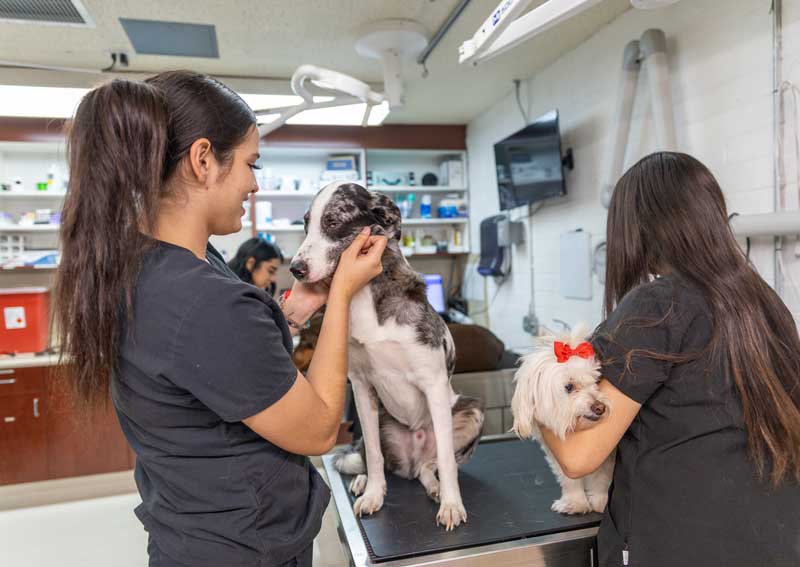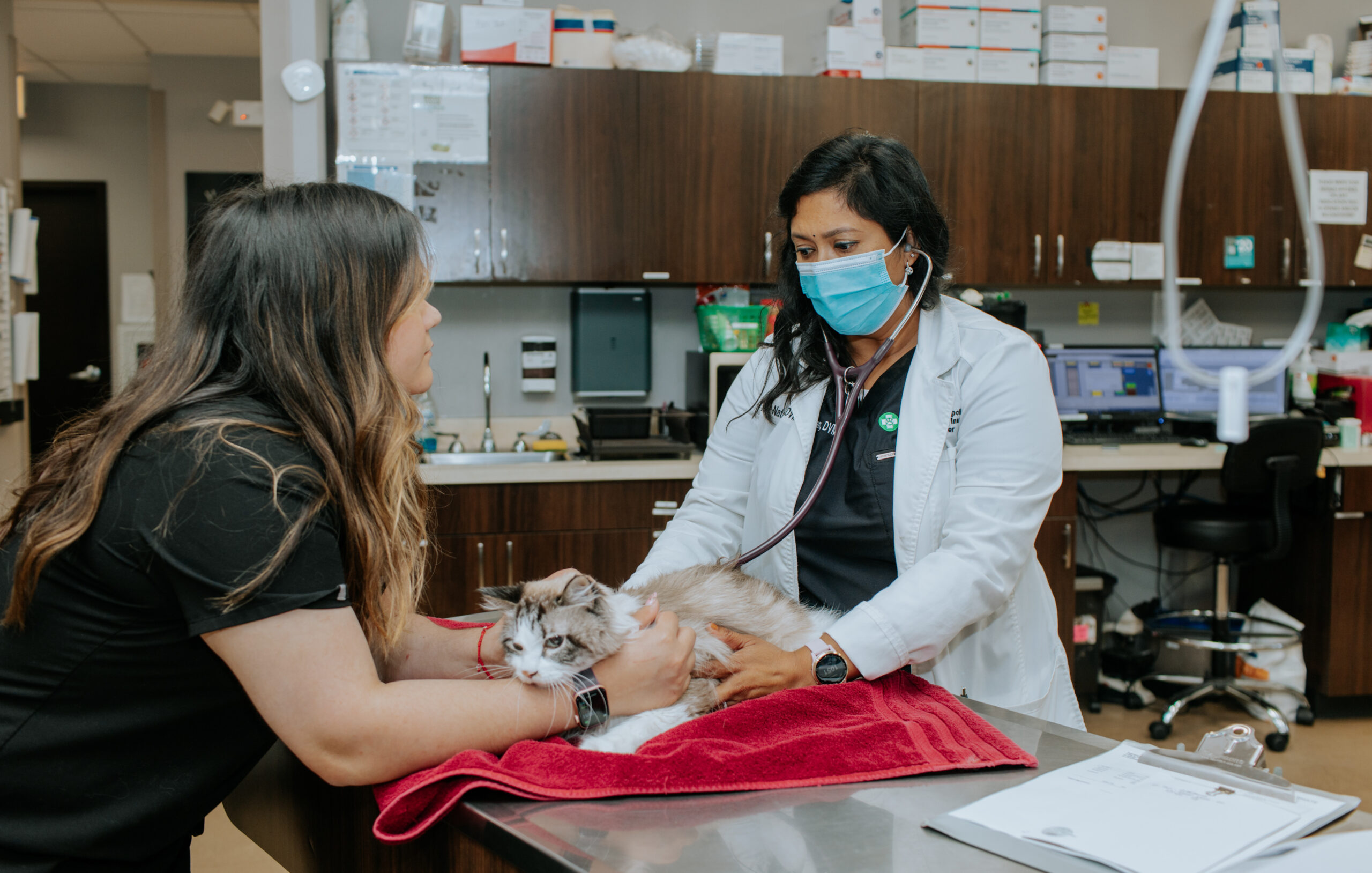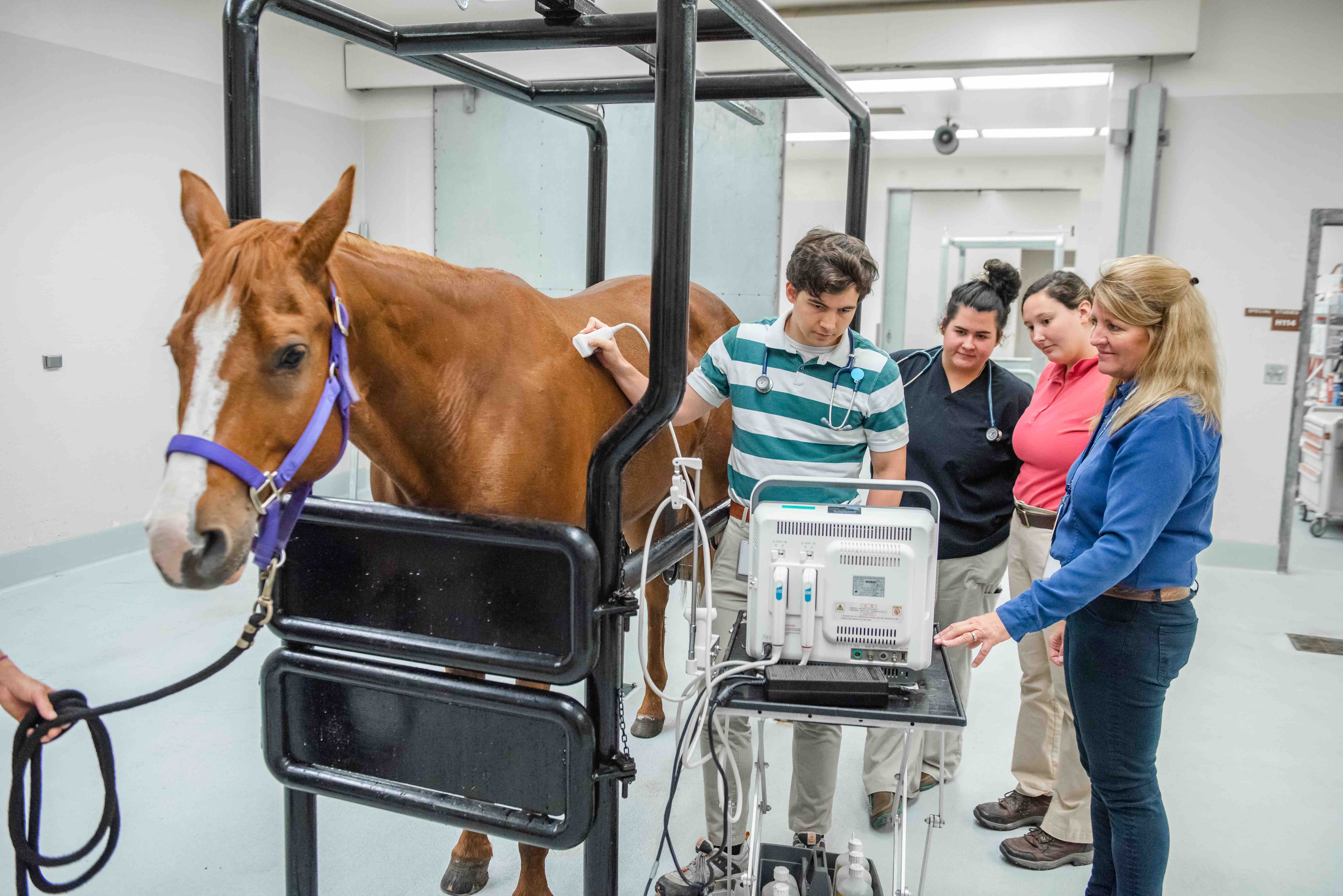Top Questions to Ask a veterinary cardiologist near me About Your Pet’s Heart Health
Top Questions to Ask a veterinary cardiologist near me About Your Pet’s Heart Health
Blog Article
Why Pet Rehab Is Essential: the Conveniences of Veterinarian Providers for Your Pet's Recuperation
Animal rehabilitation is a vital element of healing for family pets facing injuries or impairments. Vet solutions supply important assistance through tailored rehabilitation strategies that attend to individual needs. These strategies frequently include pain monitoring, physical treatment, and nutritional support. Comprehending the numerous aspects of pet rehabilitation can brighten its relevance in boosting recovery results. What particular advantages do these solutions provide, and exactly how can they transform a pet dog's recovery trip?
Recognizing Pet Rehab
Pet rehabilitation encompasses a variety of healing techniques focused on recovering the wellness and functionality of injured or impaired animals. This area incorporates different strategies, including physical therapy, hydrotherapy, and work-related treatment, customized to satisfy the specific needs of each animal. Rehab specialists examine a pet's problem, establishing customized treatment strategies that may involve workouts to enhance muscles, improve movement, and enhance general wellness. The process not only concentrates on physical healing yet additionally addresses psychological and behavioral facets. Animals often experience stress and stress and anxiety adhering to an injury, making psychological wellness considerations crucial in recovery. By developing an encouraging environment, specialists can assist animals reclaim their confidence and adapt to their brand-new situations. Through regular sessions, pets can experience substantial renovations, inevitably bring about a much better lifestyle. In general, understanding pet rehabilitation highlights its relevance in promoting recuperation and enhancing the bond between animals and their proprietors.
The Role of Pain Management in Recuperation
Just how necessary is reliable discomfort monitoring in the recuperation of hurt animals? It plays an essential role in facilitating recovery and improving the overall health of family pets. Correct discomfort administration not just eases pain yet likewise advertises mobility, making it possible for pets to join rehabilitation tasks necessary for healing. When discomfort is effectively managed, pets tend to respond favorably to treatment, bring about quicker rehabilitation outcomes.Veterinarians utilize different methods to evaluate and attend to discomfort, including medicines, acupuncture, and different treatments. By tailoring pain monitoring techniques to the individual demands of each animal, veterinarians can guarantee that animals stay calm and participating throughout their healing trip. Moreover, reducing discomfort helps in reducing stress and anxiety, which can hinder healing and extend recovery times. To summarize, effective discomfort management is crucial for boosting the healing process and boosting the lifestyle for hurt animals.
Physical Treatment Methods for Pet Dogs
Numerous physical treatment techniques are offered to aid in the rehab of pets recovering from injuries or surgeries (tplo surgery). These methods can boost wheelchair, alleviate pain, and advertise recovery. Restorative exercises, for circumstances, help reinforce muscular tissues and improve joint function, enabling family pets to reclaim their physical capabilities progressively. Hand-operated therapy, that includes massage and mobilization, can ease stress and boost circulation, adding to a much faster recovery.Other strategies such as easy array of activity workouts motivate joint flexibility and decrease tightness. Furthermore, electric stimulation treatment might be employed to promote nerves and muscles, advertising healing and pain relief.Veterinary specialists frequently tailor these strategies per animal's particular needs, making sure a thorough rehab strategy. By implementing these physical treatment approaches, pet dogs can experience enhanced high quality of life and an extra successful recovery from their ailments. The integration of these practices right into recovery programs is important for excellent recuperation results
Benefits of Hydrotherapy for Recovery
Hydrotherapy uses significant advantages in animal recovery, especially in improving movement. This water-based treatment promotes discomfort alleviation while offering convenience to hurt or recuperating pet dogs. Furthermore, it assists in strength-building workouts that contribute to total physical recovery.
Enhanced Movement Improvement
As animals recuperate from injuries or surgeries, enhanced mobility usually comes to be a main goal of their rehabilitation. Hydrotherapy works as a useful tool in attaining this purpose. With water-based exercises, pets can involve in low-impact motions that assist in joint movement and enhance muscle mass without the stress and anxiety of weight-bearing activities. The buoyancy of water sustains their bodies, enabling increased variety of motion and flexibility enhancement. Furthermore, hydrotherapy urges better equilibrium and coordination, which are crucial for bring back regular activity patterns. Normal sessions can cause considerable progress in a pet's physical capabilities, ultimately enhancing their quality of life. This method not only help in healing however likewise promotes an extra energetic and satisfying way of living post-rehabilitation.
Discomfort Relief and Comfort

Remedy for discomfort is a vital element of pet rehab, and hydrotherapy greatly adds to this procedure. By making use of water's buoyancy, hydrotherapy minimizes joint tension and alleviates pain throughout activity. This healing technique provides a relaxing atmosphere where animals can involve in mild workouts without the full weight of their bodies impacting their recuperation. The cozy water boosts blood circulation, promoting healing while additionally motivating leisure. Furthermore, hydrotherapy sessions can be tailored to fulfill the details requirements of the pet, making sure optimal convenience. As family pets experience lowered discomfort and boosted comfort degrees, their overall readiness to join rehab tasks typically improves, causing a more efficient recovery trip. Consequently, hydrotherapy acts as a vital device in boosting discomfort relief and comfort during recovery.
Toughness Building Exercises
Strength-building workouts play a necessary duty in the rehab process, with hydrotherapy offering special advantages. This type of therapy uses water resistance to boost muscle strength without placing excessive stress on the joints. The buoyancy of water supports the animal's weight, permitting for much safer movement and enhanced variety of activity. Additionally, hydrotherapy can boost cardio health and promote overall health and fitness, aiding in much faster recovery from injuries or surgeries. The regulated atmosphere likewise reduces the danger of reinjury, making it an excellent option for pet dogs calling for recovery. Regular hydrotherapy sessions can result in obvious improvements in wheelchair, toughness, and endurance, inevitably boosting the family pet's high quality of life and ability to return to typical activities.
Significance of Personalized Rehabilitation Strategies
Customized rehab strategies are essential for addressing the one-of-a-kind requirements of each pet, making sure personalized therapy approaches. These strategies enable reliable progress tracking and required adjustments, fostering excellent recovery results. Furthermore, a holistic method can improve the overall well-being of the pet, advertising a more detailed rehabilitation experience.
Individualized Treatment Approaches
While several rehabilitation programs adopt a one-size-fits-all strategy, the distinct needs of each pet necessitate customized treatment strategies for excellent recovery. Custom-made rehabilitation plans take into account different elements, consisting how much schooling to be a veterinarian of the pet's species, age, case history, and details about his injuries or problems. By customizing treatments, veterinarians can attend to each pet dog's one-of-a-kind difficulties, taking full advantage of the performance of the rehab procedure. Individualized strategies may incorporate different methods such as physical treatment, hydrotherapy, and restorative workouts, ensuring that the treatment aligns with the animal's capacities and progress. Additionally, individualized techniques foster a stronger bond in between the pet and the caregiver, promoting a more appealing and supportive healing environment. Inevitably, individualized therapy is crucial for accomplishing best possible end results in pet rehabilitation.
Development Monitoring and Adjustments

Holistic Recovery Strategies
All natural recovery approaches are essential for reliable pet recovery, as they stress the relevance of personalized therapy plans tailored to each animal's specific requirements. This strategy thinks about the physical, emotional, and environmental aspects impacting recovery. Customized rehabilitation strategies may include a combination of physical therapy, nutritional counseling, and behavioral adjustments. By dealing with these varied aspects, veterinarians can improve the general wellness of the pet and promote a faster healing. Such tailored approaches promote a much deeper understanding of the pet dog's one-of-a-kind difficulties, leading to much more effective treatments. Ultimately, all natural healing techniques not just improve physical health yet also add to the animal's mental and emotional security, making certain a thorough rehab experience.
The Effect of Nourishment on Recuperation
Nutrition plays an important role in the recuperation process for refurbishing pets, often identifying the rate and effectiveness of healing. A healthy diet plan provides the needed nutrients that support cells fixing, boost the body immune system, and improve overall vitality. Healthy protein is specifically important, as it helps in muscle rebuilding and recuperation from injuries. Important fatty acids, vitamins, and minerals likewise add to lowering swelling and promoting optimal cellular function.Veterinarians often highlight the importance of tailored nourishment plans, thinking about each pet emergency care animal's specific needs, age, and health condition. Correct hydration is just as essential, as liquids facilitate vitamins and mineral absorption and assistance in cleansing. By ensuring that animals receive proper nourishment, caregivers can greatly improve their opportunities of a successful healing, bring about better long-lasting wellness results. Inevitably, nourishment acts as a fundamental aspect in the recovery trip, supporting pets in regaining stamina and resilience post-injury or disease.
Success Stories: Pet Dogs Who Thrived After Rehab
Effective rehabilitation tales abound, showcasing the strength of family pets who have overcome substantial difficulties. Take, for circumstances, Bella, a gold retriever who experienced serious injuries from a vehicle crash. With devoted vet treatment and an extensive rehab program, she regained her flexibility and went back to her spirited self, much to her proprietor's pleasure. Max, a senior pet cat identified with arthritis, experienced impressive enhancement with a combination of physical treatment and discomfort management. His newly found dexterity enabled him to appreciate his favorite sunbathing spots once more. An additional motivating case is that of Coco, a rescued greyhound who conquered stress and anxiety via therapy and socialization techniques, enabling her to grow in her brand-new home. These success stories exemplify the transformative power of pet recovery, highlighting that with the appropriate assistance, pets can not only recuperate yet lead meeting lives, enriching the bonds they share with their households.
Regularly Asked Concerns
The length of time Does the Rehab Refine Typically Consider Pets?
The rehabilitation procedure for animals typically differs based upon the injury or problem, ranging from a few weeks to a number of months. Specific progression, therapy type, and dedication to exercises significantly influence the overall period of healing.
Are There Any Type Of Risks Connected With Animal Rehabilitation?
Pet rehab might carry dangers such as worsening of injuries, inappropriate techniques resulting in discomfort, or not enough tracking during recuperation. These aspects can hinder progression and impact the overall performance of the rehab procedure.

Can All Pets Take Advantage Of Rehabilitation Solutions?
Not all pets might call for recovery, but lots of can benefit significantly. Rehab solutions can enhance wheelchair, relieve discomfort, and enhance overall well-being, especially for those recovering from injuries, surgeries, or chronic conditions.
Just How Can I Prepare My Pet for Rehab Procedure?

What Indicators Suggest My Pet Dog Requirements Rehabilitation?
Indications showing a pet dog might require rehab consist of difficulty strolling, limping, decreased task levels, hesitation to jump, or signs of discomfort. Observing these behaviors can prompt proprietors to look for expert analysis and therapy for their animals.
Report this page